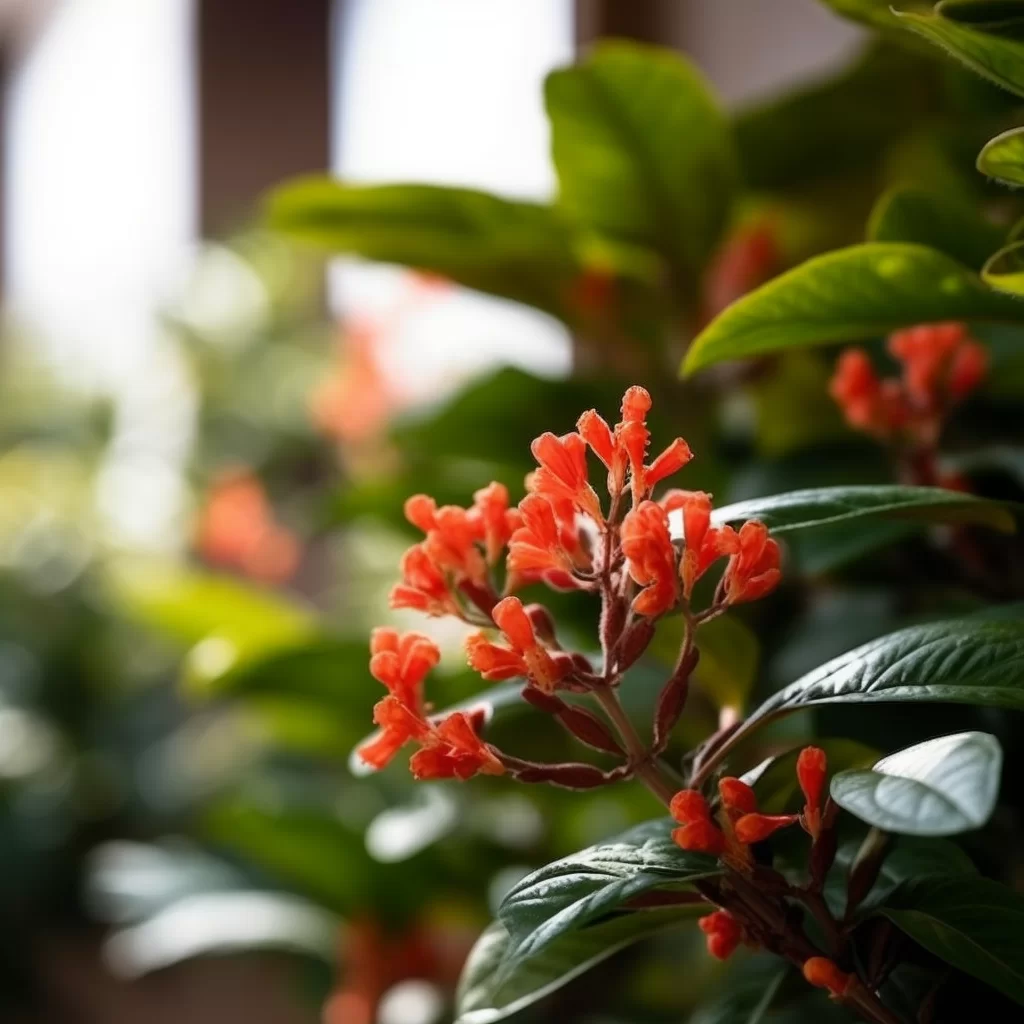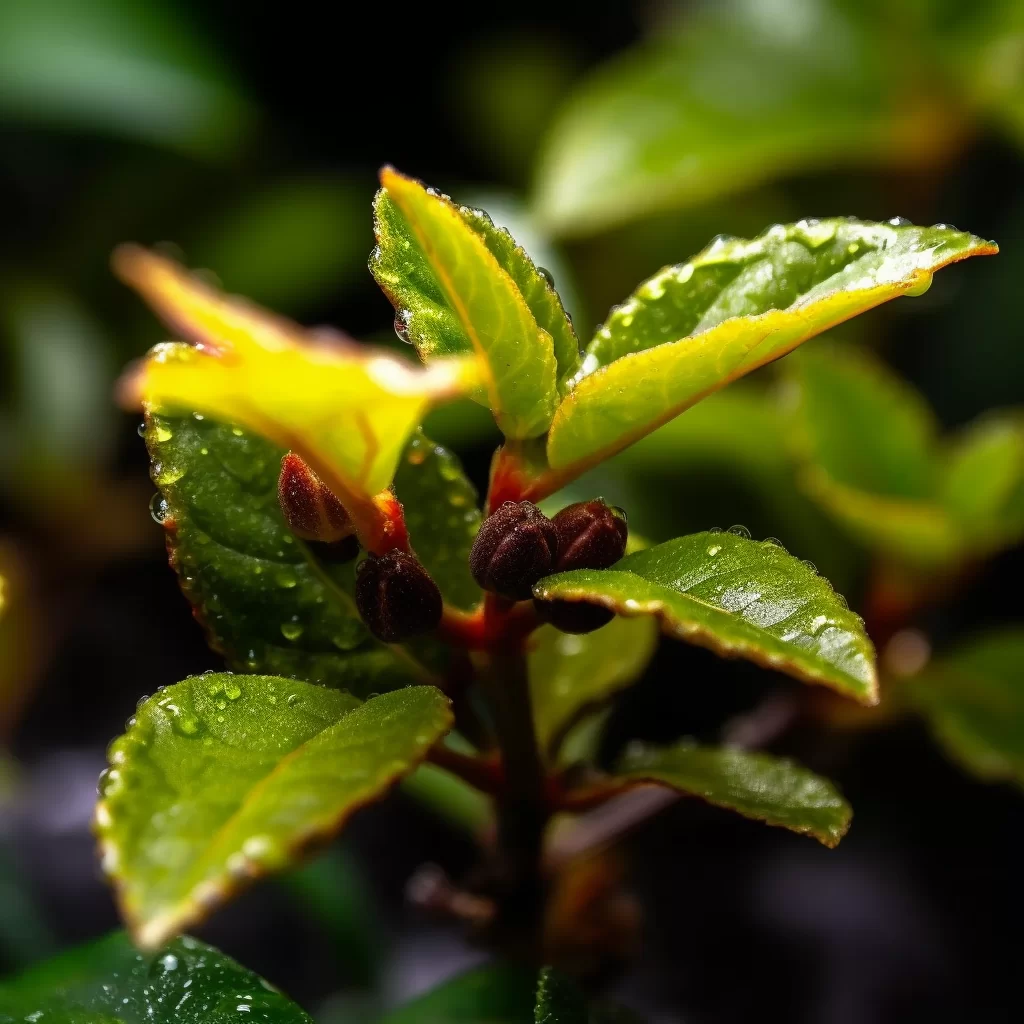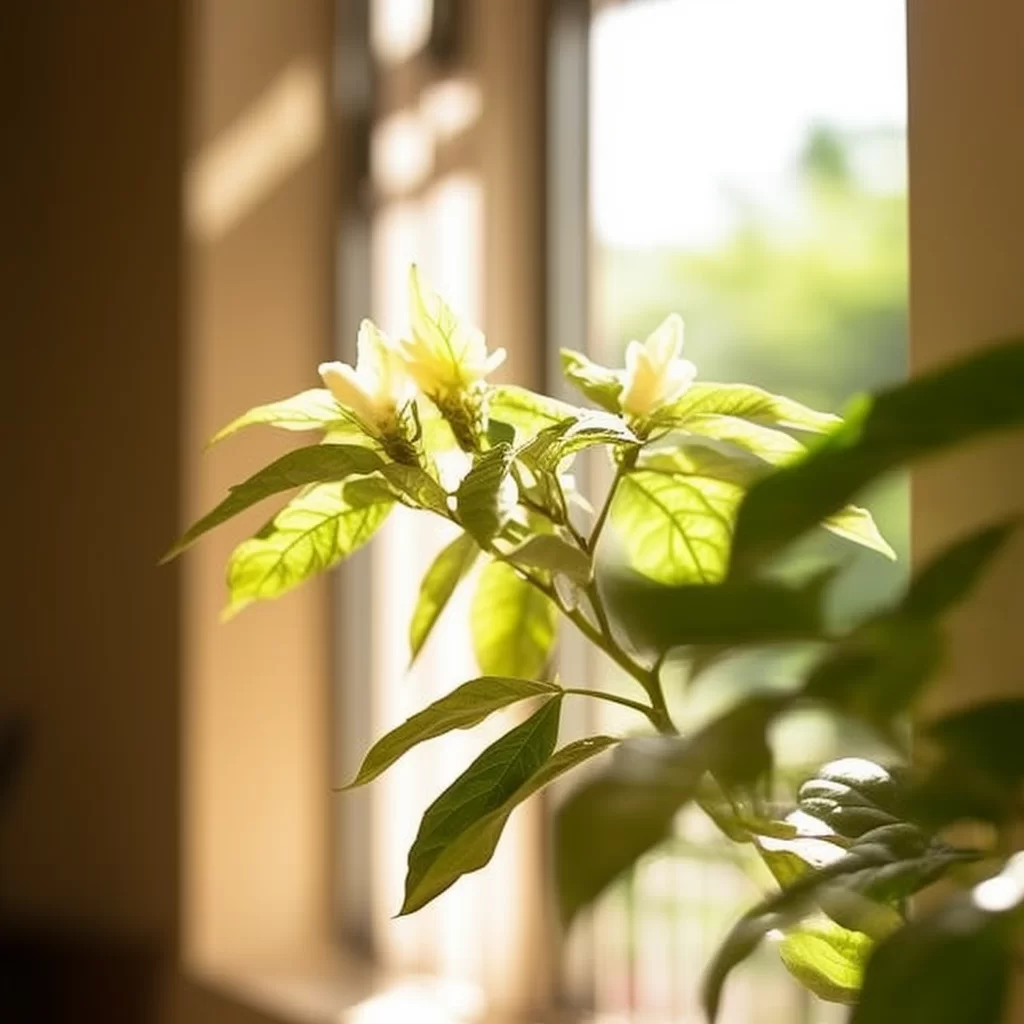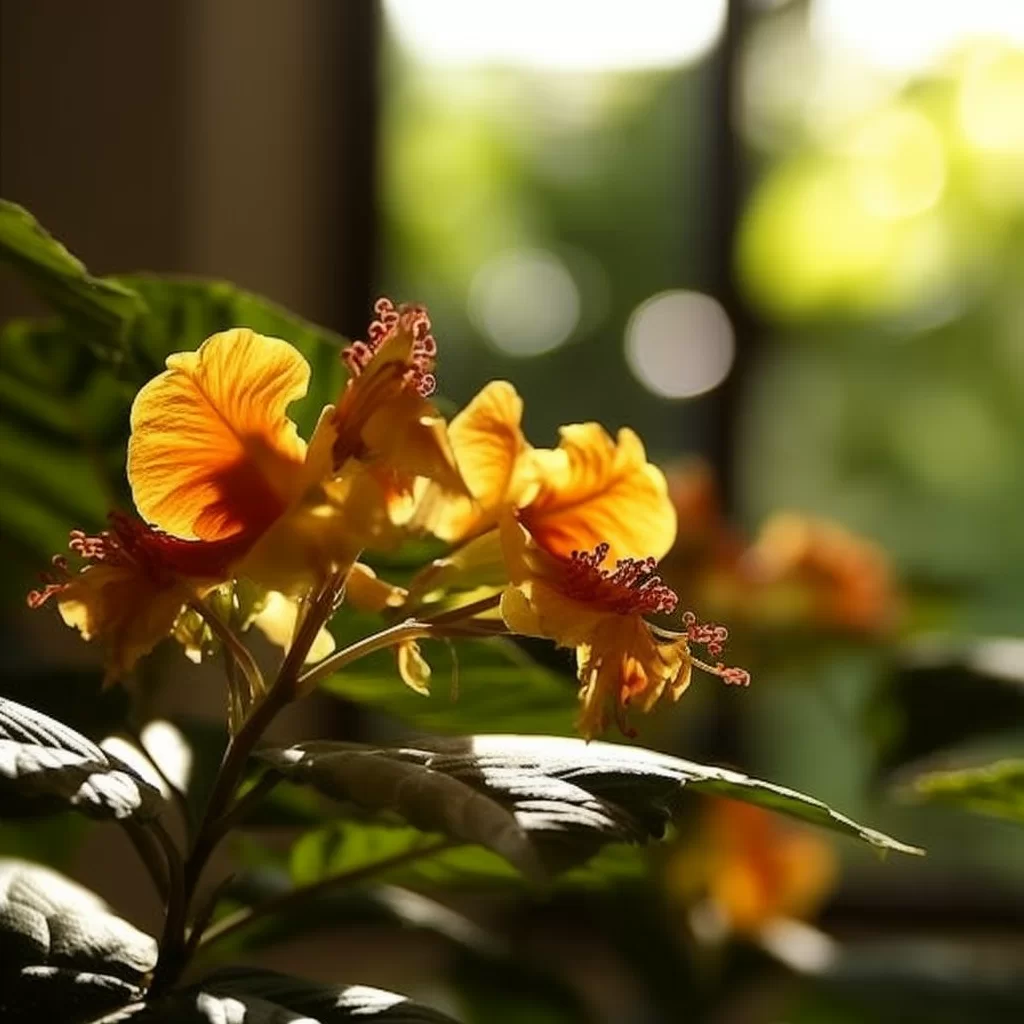Story of Day :
Contents
Japonica Plant: Complete Guide and Care Tips
For those who have a passion for gardening, the japonica plant may be a familiar name.
Known for their stunning and colorful flowers as well as their healthy foliage, these plants are admired by many.
They have become increasingly popular due to their unique traits that make them stand out from other plants in the garden.In this article, we will delve deeper into what makes japonica plants so special and share tips on how to take care of them properly.
From understanding the best soil type to knowing when to prune, we will provide comprehensive advice that will help you maintain your beautiful japonica plant in all its glory.
Whether you’re new to gardening or an experienced enthusiast, our guide is sure to offer valuable insights that will ensure your japonica plant thrives year after year!
What is a Japonica Plant?
The Camellia family is a diverse group of over 100 plant species, among which the japonica plant stands out.
Its name “japonica” comes from its native country, Japan, and other areas in Asia where it originates.
The most commonly known member of this family is the Camellia Japonica variety that produces large flowers in various shades such as pink, red, white or a combination of these colours.
These stunning blooms are often used for decorative purposes in gardens and parks worldwide. Japonica plants have been cultivated for centuries by gardeners who admire their beauty and elegance.
Japonica plants have been cultivated for centuries by gardeners who admire their beauty and elegance.
Their large flowers make them one of the most striking plants in any garden setting and their long blooming period adds to their allure.
Today, they are grown not only for decorative purposes but also for medicinal reasons due to their leaves’ anti-inflammatory properties that aid digestion and boost metabolism.
With its rich history and multiple benefits, it’s no wonder why the Japonica variety remains a popular choice among garden enthusiasts worldwide!
Growing Conditions for Japonicas
Japonicas are a species of flowering plants that prefer to grow in moderate climates.
They thrive in regions where the winters are mild and the summers are cool, with temperatures ranging between 40-70 degrees Fahrenheit.
In addition, they require plenty of moisture during spring and summer months to grow successfully.
This can come from either natural rainfall or irrigation.If you’re thinking about growing Japonicas, it’s important to choose a location that meets their specific requirements.
The ideal climate will provide enough warmth for them to flourish without becoming too hot or dry.
It’s also crucial to keep them well-watered during the growing season, especially if your area doesn’t receive enough rain naturally.
With these conditions met, you’re sure to enjoy beautiful blooms from your Japonica plants throughout the year! If you’re planning to plant some japonicas, it’s essential to consider their exposure to the sun.
If you’re planning to plant some japonicas, it’s essential to consider their exposure to the sun.
These plants thrive better when they get partial sun exposure rather than being exposed to direct sunlight all day long.
This is because excessive heat can cause wilting of the leaves, which will eventually harm the growth and natural beauty of your plant.Whether you’re planting your japonicas outdoors or indoors, it’s crucial to keep them at a suitable location where they can receive just enough sunlight.
By doing so, you’ll ensure that your plants will have a constant source of energy for photosynthesis while also preventing any leaf damage from excessive heat.
Remember that providing adequate care for your plants is essential in keeping them healthy and beautiful for years to come – so always place your japonicas in an ideal location with partial sun exposure!If you’re planning to grow plants, it’s important to know that they thrive in certain soil conditions.
For instance, your soil should be slightly acidic with pH levels ranging from 5.5-6.5.
If the pH levels are off, your plants might struggle to absorb essential nutrients and grow as expected.
One way to improve soil acidity levels is by adding composted oak leaves to the mix before planting.
Not only do these leaves work wonders for improving soil pH, but they also provide additional nutrients that will come in handy if you’re growing on hard clay soils.Composted oak leaves are an excellent addition to any garden bed or potting mix because of their ability to regulate soil acidity levels and provide essential nutrients that plants need for healthy growth.
The process of decomposition releases acids from the oak leaves which gradually decrease the pH level of the surrounding soil over time, making it more conducive for plant growth and development.
Additionally, when broken down into compost form, these leaves become a rich source of organic matter which improves water retention capabilities while providing crucial microorganisms necessary for healthy root systems in plants grown on hard clay soils with low fertility levels.
The Best Time to Plant Japonicas
When planning to plant your beloved japonicas, it is important to take into consideration the climate conditions of your location.
The ideal time for planting may vary depending on the temperature and weather patterns unique to your area.
However, generally speaking, early spring or fall seasons tend to be the best times for planting these beautiful flowers.
This is because during these seasons, temperatures are not extreme hot nor cold, creating a favorable environment for growth and development.If you reside in a location that experiences harsh winters or hot summers, it may be beneficial to do some research on specific varieties of japonicas that are better suited for such climate conditions.
Nonetheless, whether you choose early spring or fall as your planting season of choice, with good soil preparation and proper care afterward such as watering and fertilization; your japonica garden can flourish beautifully year-round bringing color and joy into any landscape.If you’re planning on planting anything, it’s important to prepare the site beforehand.
This involves digging a hole that is twice as wide as the rootball, but not deeper than its actual depth.
Once you’ve done that, it’s time to add some compost and topsoil before backfilling the hole.
This will provide your plants with the nutrients they need to grow healthy and strong.
After planting, make sure you water thoroughly so that the roots can take hold and establish themselves in their new home. Preparing your site for planting is crucial when it comes to growing healthy plants.
Preparing your site for planting is crucial when it comes to growing healthy plants.
To do this properly, start by digging a hole that is twice as wide as your rootball – this will give your plant enough room to spread out its roots without being cramped or suffocated by soil.
However, be careful not to dig too deep because this could damage the plant’s delicate roots.
Once you’ve dug your hole, add a mix of compost and topsoil before backfilling it with soil again – this will help provide all of the essential nutrients needed for successful growth! Finally, after planting make sure you water thoroughly so that your new plants can establish themselves quickly in their new environment!
Caring for Japonicas
If you’re looking for a plant that’s easy to care for but still adds a touch of elegance to your garden, japonicas might be the perfect choice.
While they don’t require extensive upkeep, they do need some attention throughout the year to thrive.
Luckily, there are several tips you can follow to keep your japonica plant healthy and beautiful.To begin with, make sure you provide your plant with adequate water and sunlight.
Japonicas prefer moist soil but can’t tolerate standing water or overly soggy conditions.
Additionally, they need plenty of direct sunlight to produce vibrant blooms in the spring and summer months.
It’s also essential to prune your japonica regularly since this promotes better air circulation around the foliage and encourages new growth.
With just a little bit of care, your japonica will reward you with stunning flowers year after year!
Watering
Giving enough water to your plants is important, particularly in the first year of growth when they are still establishing their root systems.
During this phase, ensuring that the soil stays moist is crucial to support their development.
However, it is important not to overdo it with watering as excessive moisture can be detrimental and lead to root decay.In short, watering your plants during their initial stages of growth should be a top priority.
Keeping the soil consistently moist but not drenched will help support strong root formation and prevent any potential damage caused by too much water.If you are planning to grow japonica plant, it is important to note that it requires consistent watering.
However, one should be mindful not to overwater or underwater the plant.
Generally, japonica plants require about 1 inch of water per week which includes both rainfall and irrigation.
This efficient watering routine helps in maintaining the overall health of the plant and preventing any adverse impact on its growth.To ensure your japonica plant thrives well, make sure you provide it adequate moisture without drowning it.
The ideal way is to water your plants deeply once a week depending on its location and weather conditions.
For instance, in hot summer days when evaporation rates are high, more frequent watering may be required as opposed to cooler seasons where less frequent watering will suffice.
In summary one needs to find a balance between providing enough hydration for their japonica plant while avoiding overwatering or underwatering which can lead to stunted growth or other problems.
Fertilizing
Fertilization is an essential aspect of maintaining healthy growth and blooming in plants.
It involves applying a balanced fertilizer that contains the necessary nutrients required for optimal growth.
While there are different types of fertilizers available, it is recommended to apply them three times a year, at strategic periods – early spring, mid-summer after the blooming season ends and late summer before the dormancy period starts.
This allows for proper absorption of nutrients that will enable your plants to thrive and bloom beautifully.A balanced fertilizer contains a mixture of important nutrients such as nitrogen, phosphorus, and potassium that are crucial for plant health.
During spring when plants come out of dormancy mode, they require high amounts of nitrogen which promotes leafy green growth whereas during late summer they need more phosphorus which helps develop strong roots and flowers.
By following this fertilization schedule properly each year, your plants will receive adequate nutrition leading to healthier foliage and blossoms resulting in beautiful landscapes all season long!If you want to give your plants an extra boost, using fertilizers is not the only option available.
You can also try adding organic matter like mulch around the base of your plants.
This will not only provide essential nutrients for your plant’s growth but also help keep the soil moist for longer periods of time.
As the mulch decays over time, it releases a slow release fertilizer that helps nourish your plants in a natural and sustainable way.Mulching has many benefits for both gardeners and their plants.
It’s an effective way to reduce weed growth, retain moisture in the soil and regulate soil temperature during extreme weather conditions.
Additionally, as organic materials decay under a layer of mulch they provide vital nutrients to plant roots that would otherwise be lost through leaching or runoff.
By incorporating this natural process into our gardening routine we can achieve healthier and more resilient gardens with less effort and fewer inputs required making them eco-friendly as well!
Pruning
Pruning is an essential practice that helps keep plants in good shape and improve their health, especially during dormant periods.
It involves removing weak branches or shaping growth to maintain a desirable size and shape.
Pruning also encourages new growth and promotes better flowering in the future.Timing is crucial when it comes to pruning, and the ideal time to do it is right after flowering in late winter or early spring.
During this time, plants are still dormant but starting to come out of their winter rest phase.
By pruning at this point, you can prevent damage or stress on the plant while giving ample time for new growth before summer arrives.
Whether you’re simply trimming away dead branches or shaping your plant into a beautiful form, proper pruning techniques can help maintain its overall health for years to come.When pruning trees or bushes, it’s important to be mindful of where you’re cutting.
If you cut into old wood, the plant won’t regrow from that spot.
This is because old wood has already completed its growth cycle and isn’t capable of generating new growth.
Instead, focus on trimming newer branches and growth to encourage the plant to continue developing in a healthy manner.While it may be tempting to take a more aggressive approach when pruning plants, cutting into old wood can actually do more harm than good.
Not only will the plant fail to regrow from that area, but it can also cause damage or stress to the rest of the plant as well.
By being careful not to cut into old wood and instead focusing on fresh growth areas, you’ll help ensure that your plants stay healthy and vibrant for years to come.
Conclusion
To sum up, if you want a stunning flowering plant that is easy to maintain, the japonica is the perfect choice! These magnificent plants offer years of enjoyment with their beautiful blooms and foliage.
By following some simple care steps such as regular watering, fertilization and occasional pruning, you can keep your japonica healthy and thriving.
However, it’s essential to avoid exposing them to direct sunlight for too long as it can lead to wilted leaves.
With the right growing conditions and by following our expert tips on caring for your japonicas, you’ll be rewarded with gorgeous blooms that will brighten up any indoor or outdoor space.All things considered, if you’re in search of an attractive yet low-maintenance flowering plant, then look no further than the japonica! These delightful plants are sure to provide years of pleasure if given proper care such as frequent watering fertilization along pruning when needed.
It’s also crucial to note that partial sun exposure is best for these plants because too much sunlight can cause wilting leaves due to excessive heat exposure.
To ensure healthy growth and blooming of your japonicas indoors or outdoors – maintaining optimal growing conditions and following our care advice is vital.
So why wait? Start cultivating your very own stunning japonicas today!